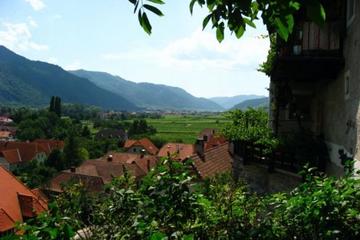
The Wachau Valley, formed by the Danube River west of Vienna, is one of the most popular tourist destinations in Austria. The valley, located between the towns of Melk and Krems, has been designated a UNESCO World Heritage site since 2000 and features some 5,000 historic monuments, including monasteries, churches and castles. The valley is also known for its apricots and grapes, which are used to produce some of the best specialty liquors and wines in the country.
Beyond the towns of Melk and Krems themselves, highlights in the Wachau Valley include the ancient Melk and Gottweig Abbeys, the Schallaburg Castle, the Burgruine Aggstein, and the town of Durnstein, founded in the 11th century on the banks of the Danube. Melk was once a Roman border post and while many of its buildings date to the 16th to 18th centuries, the layout of the town can be traced to the 11th and 12th centuries. Krems also has many historic buildings, including a Gothic Minorite church, the Pfarrkirche St. Nicholas Church and a Baroque palace built in 1721.
The Wachau Valley stretches for 24 miles between Melk and Krems and can be visited as a day trip from Vienna. To do so, take an early train to Melk and then travel to Krems by steamer boat or by bicycle before returning to Vienna by train from Krems. A paved bike trail runs along the north bank of the Danube and the ride should take about three hours.